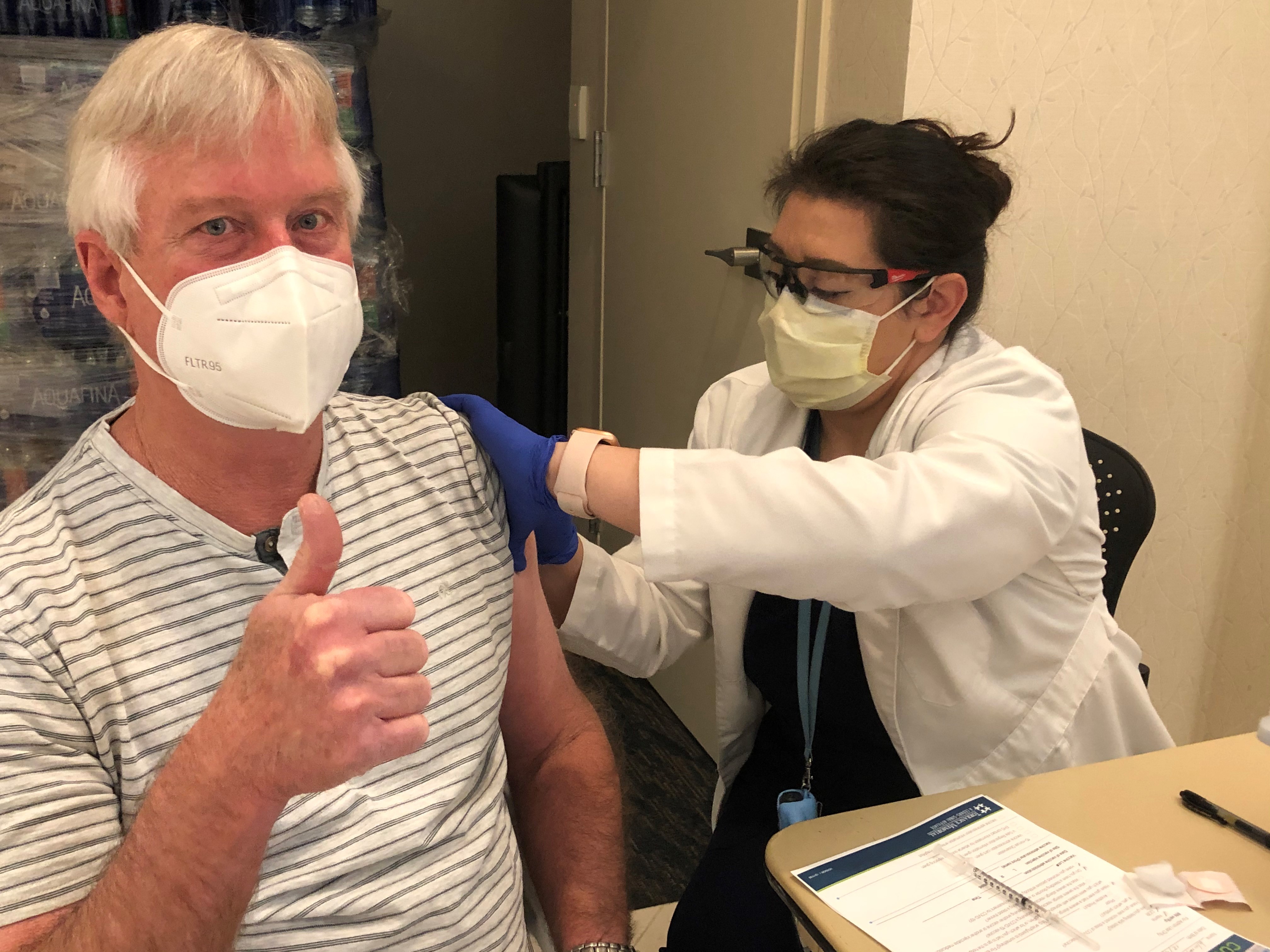Keep the face coverings and hand sanitizer nearby; COVID-19 vaccine isn't likely to be available to most Americans until the spring
By Dr. William Kim, Chief Medical Advisor, Beach Cities Health District
The end is near. But not as near as we’d like.
COVID-19 has brought the world to its knees, taking millions of lives, causing governments to impose lockdowns, cancel community events and shutter businesses to try and slow the spread of this deadly virus. We’ve stayed home, worn face coverings when we weren’t home, we’ve kept our distance and washed our hands countless times. Now we have a new weapon in this fight.
A COVID-19 vaccine has been in the works since the discovery of the virus late last year, with the effort accelerating thanks to Operation Warp Speed here in the U.S. The result is not one, but two vaccines approved for emergency use authorization (EUA) by the Food and Drug Administration (FDA). At least two more COVID-19 vaccines are on the way, important tools to help us stop this pandemic and get life back to normal.
But unless you’re a healthcare professional, first responder, frontline essential worker or a resident of a long-term care facility, it’s unlikely that you’ll get the vaccine before spring as officials work to distribute it to 300 million Americans. As promising as the news is about the vaccine, the reality is we need to be patient and continue to follow the guidance we now know so well: Stay home as much as possible, wear face coverings, maintain physical distance from others and wash your hands often.
The first COVID-19 vaccines to receive EUAs – from Pfizer-BioNTech and Moderna – use a technique called messenger RNA (mRNA), first developed about 20 years ago. This mRNA technology is an amazing development in science and is extremely efficacious in providing immunity. A vaccine with 94-95 percent efficacy is just unheard of.
In February, Moderna and Pfizer studied the genetic profile of this virus and identified the spike protein which coats the virus and how it attaches to our angiotensin-converting enzyme 2 (ACE2) receptors, which is how it gets into cells. Scientists knew if we can get our own bodies to make antibodies to that genetic code, we’d be home free. This is what they’ve accomplished using messenger RNA.
When injected into our bodies, it goes specifically to the ribosomes, the cells that make antibodies and it figures out how to make the protein we’re asking it to make.
In this instance, it’s been a home run. Both vaccines tell our ribosomes to make the specific antibody that will prevent the spike protein from adhering to our receptors and cause the infection. In those few instances where it gets through, nobody gets super sick.
Both mRNA vaccines call for multiple injections. In the case of the Pfizer-BioNTech vaccine, three weeks is recommended between doses; for the Moderna vaccine, patients return for the second dose four weeks later.
Many well-known vaccines require two or more shots. Among these are the pneumococcal vaccine, given to adults aged 60-65 to prevent pneumococcal pneumonia; for teens the HPV vaccine, which is for the virus that causes cervical cancer, is a series of three shots. Young children get DPT – diphtheria, pertussis and tetanus vaccine, a series of three shots over the course of four years; and MMR – measles, mumps and rubella, which requires two injections.
Getting the first injection won’t immediately make someone immune to COVID-19. The cells don’t make a ton of antibodies right away, so we send the message again and then the ribosomes – the little assembly plants recognize this, and it really starts to make antibodies. After the second shot, the immunity gets boosted tremendously.
There are people hesitant to get a vaccine. I would like to assure these people that the science behind vaccines is sound and no steps were skipped during the development and approval process. The two vaccines available today were studied on more than 70,000 volunteers, including adults of all ages and racial and ethnic groups and were found to work very well and be safe for all (some of those volunteers are Beach Cities residents!). The efficacy of the COVID-19 vaccines is tremendous. This is an important way we can keep each other healthy, support our health care workers, make our communities safe and get California back on its feet.
Finally, we’re coming to the finish line, don’t give up now. Continue to stay with just your household and always have your face covering with you. Take a deep breath, if we hang on a few more months, it’s going to be a new world, a great world, and soon we’ll remember how lucky we were in 2019, before the pandemic.




